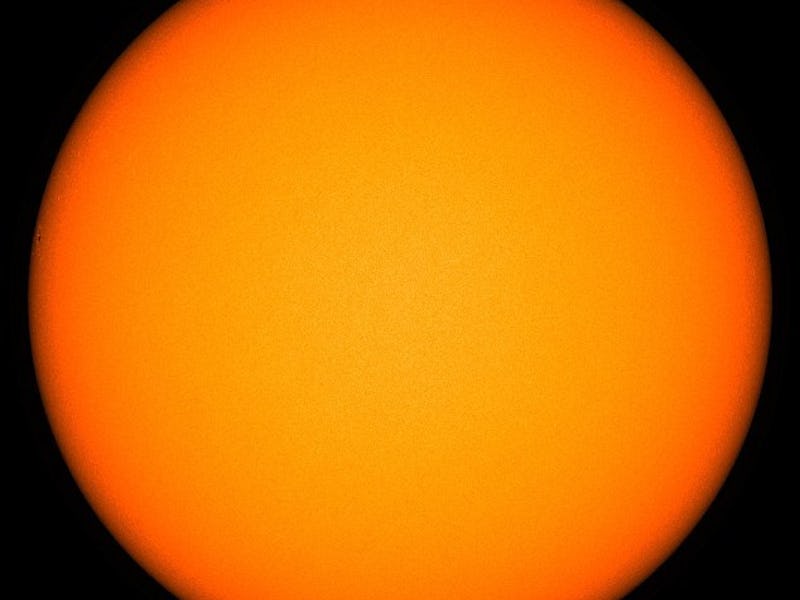The Sun's Been Spotless for 15 Days, Ahead of a "Solar Minimum"
A more accurate diagram of Earth's magnetic fields is on the way.

Right now, the sun’s having its longest period of spotlessness in years. It’s been a whopping 15 days so far, proving that we’re steadily approaching the low point of the 11-year solar cycle. That means that more accurate diagramming of Earth’s magnetic fields, and maybe slightly colder weather, is on the way.
Most people are familiar with lunar phases, both because they’re easy for humans to observe and because they affect important phenomena like tides and rainfall. We often forget that the sun has a cycle, too: It oscillates between minimum and maximum periods of solar activity (activity includes, for example, flares and sun spots). The next minimum will occur around 2021; since the sun is approaching that mark now, its surface has been exhibiting lengthening periods of spotlessness. We’re now in the midst of the longest stretch of spotlessness since the last solar minimum in 2010: 15 days and counting.
Sun spots appear to the human eye like dark blots on the sun. They’re areas of increased magnetic activity and cooler temperatures (compared to the sun’s average 6000-degree Celsius heat, they’re a wintry 1500 degrees). Check out this photo of the last solar maximum in 2014, in which spots abound, next to the spotless sun on March 20.
Somebody clean that sun on the left.
The solar cycle, like the lunar cycle, impacts our life on Earth. Heavy activity during solar maximums can lead to powerful solar flares and radiation storms, which can interfere with satellites and GPS’s. Many scientists even believe that the solar cycle affects our climate, though this hasn’t been proven. The longest solar minimum in recent history lasted from 1645 to 1715 and corresponded to an especially cold period on Earth known as the “Little Ice Age.” Scientists don’t yet know whether this is a coincidence.
It’s not all wrecked satellites and icy weather, though — there are some pretty cool benefits of the solar cycle, too. Scientists will take advantage of the forthcoming solar minimum to more accurately map Earth’s magnetic field.
The sun’s current period of spotlessness began on March 7 (the last major one was in November). They’ll just keep happening until the solar minimum occurs, so stay tuned and check ‘em out—though maybe let NASA do the investigating, and wait for their images instead of staring at a blinding ball of light.